Results
-
 £84.99
£84.99Holiday in Rio - Andreas Ludwig Schulte
The party atmosphere of the beaches in Rio de Janeiro is famous worldwide. Holiday in Rio brings this party to life and, right from the first bar, conjures up a Brazilian spirit on the concert stage. No one will be able to resist the infectious rhythms of this exciting piece!
Estimated dispatch 7-14 working days
-
 £64.99
£64.99Home Stretch - Leroy Anderson
Here's the perfect encore from the legendary writer of light concert music, Leroy Anderson. With an occasional 3/4 bar thrown in for musical grins, Home Stretch is a tuneful gallop that makes a delightful ending to a great concert.
Estimated dispatch 7-14 working days
-
£88.50
Red River - Flavio Bar
Estimated dispatch 7-14 working days
-
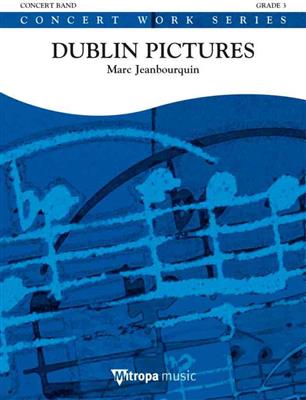 £134.99
£134.99Dublin Pictures - Marc Jeanbourquin
Ireland is a multi-faceted country that has developed a popular and distinctive musical culture. The first movement of Dublin Pictures reflects Irish festivals where there is dancing and traditional beer flowing. More tranquil in its feel, the second movement illustrates the landscape that can be seen from the Ha'penny Bridge, a bridge that crosses the River Liffey in Dublin. This movement highlights the wide range of the orchestra's sound colours as the musicians' voices combine with the wind and percussion to accompany the soloist. The lively and joyful rhythms of the last movement take the listener to Temple Bar, the famous tourist quarter of the city, well knownfor its vibrant nightlife. The music's energy and virtuosic motifs are in contrast to the previous movement and provide a spirited and festive finale.Marc Jeanbourquin wrote this piece in three movements for Azimuts Brass in 2011. He then arranged it for Concert, Fanfare or Brass Band
Estimated dispatch 7-14 working days
-
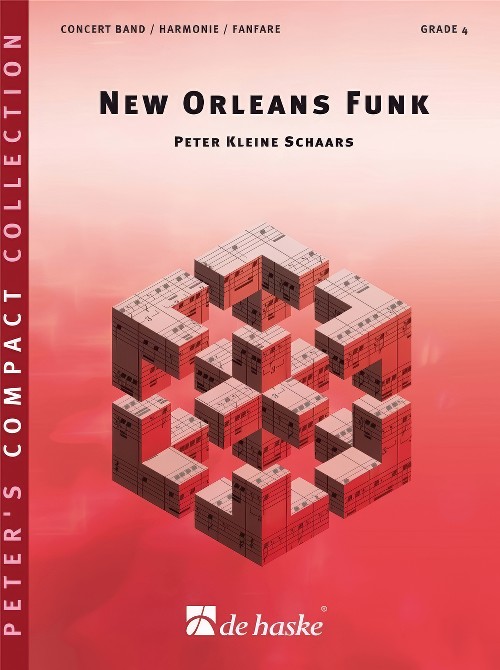 £68.99
£68.99New Orleans Funk (Flexible Ensemble - Score and Parts) - Schaars, Peter Kleine
Funk is a very rhythmic music style that finds its origin in the 1960s. The American artist James Brown and the New Orleans-based group The Meters are considered the founders of this genre. Funk is characterized by an independent bass line that emphasizes each first beat of the bar (the one), as well as by a rhythmic combination of syncopated melodies and accompaniments with lots of harmonic additions. This style-conscious composition by Peter Kleine Schaars contains a healthy blend of the harmonic ingredients as well as the rhythmic challenges of funk music. On the one hand, New Orleans Funk is an educational exercise with the rhythmic cells 9, 10, 14, 15 and 16: on the other hand, it is a funky highlight of your rehearsal or concert!Duration: 3.15
Estimated dispatch 7-14 working days
-
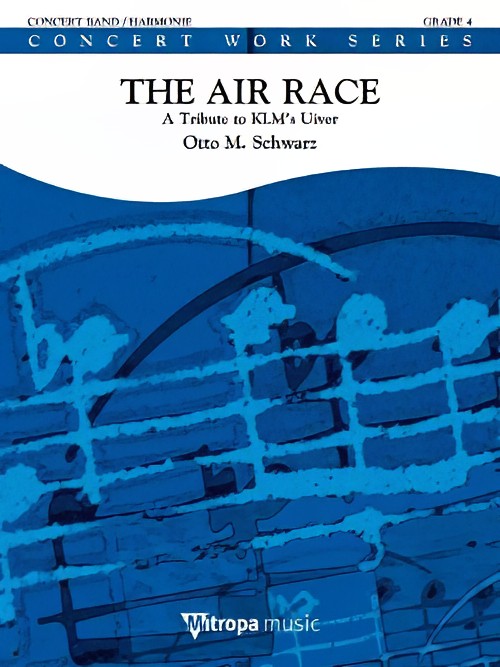 £144.99
£144.99The Air Race (Concert Band - Score and Parts) - Schwarz, Otto M.
In 1934, the city of Melbourne celebrated its centenary and marked the occasion with the MacRobertson International Air Race. KLM's entry was its first DC-2, PH-AJU Uiver (Stork), which took off on 20 October 1934. Shortly before the finish, the plane had to make an emergency landing due to poor weather conditions. The following morning, the entire town turned out to dig the aircraft out of the mud, enabling to resume its flight. Nonetheless, the distance was covered in three days, 18 hours and 17 minutes: a winning performance! This programmatic piece tells the story describing the start of the engines in bar one, the flight over the clouds, the thunderstorm, the emergency landing and many more scenes!Duration: 9.30
Estimated dispatch 7-14 working days
-
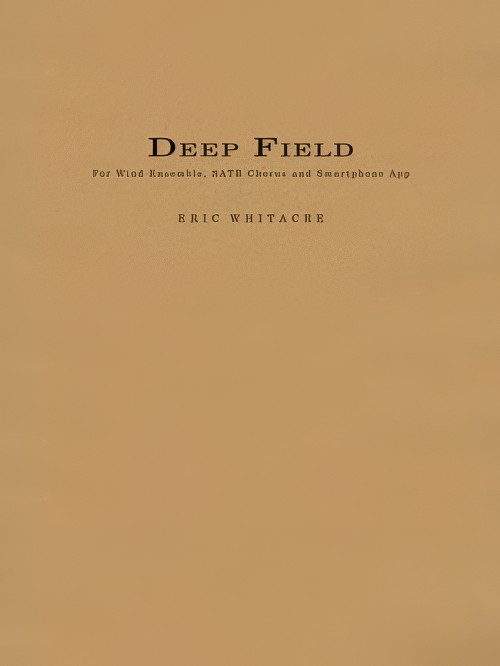 £499.99
£499.99Deep Field (SATB Chorus and Smartphone App with Concert Band - Score and Parts) - Whitacre, Eric
Score and Parts includes 40 choral octavos. Grammy Award-winning American composer Eric Whitacre's symphonic work Deep Field was inspired by the world's most famous space observatory, the Hubble Space Telescope, and its greatest discovery, the iconic Deep Field image. The new film - Deep Field: The Impossible Magnitude of Our Universe - illuminates the score by combining Hubble's stunning imagery, including never-seen-before galaxy fly-bys, with bespoke animations to create an immersive, unforgettable journey from planet Earth to the furthest edges of our universe. The soundtrack features a new, epic Virtual Choir representing 120 countries: over 8,000 voices aged 4 to 87, alongside the Royal Philharmonic Orchestra and Eric Whitacre Singers. The smartphone App playing the Deep Field electronica should be triggered by audience members from bar 217 to the end of the piece, as cued by the conductor. The app is free and must be downloaded in advance of the performance. It is available via the App Store and Google Play Store by searching "Deep Field." Duration: 20.00
Estimated dispatch 7-14 working days
-
 £79.95
£79.95Acentos Oscuras (Concert Band - Score and Parts) - Wiffin, Rob
A powerful, brooding piece in minimalist style, Acentos Oscuras (Dark Accents) is a new departure for Rob Wiffin. He wanted to try and write a reasonably extended piece of minimalism but make the necessary rhythmic shifts by means of accents across the bar rather than continually changing the metre. Hence the ear picks up a lot of patterns of 5 that are actually placed across an even beat of 2. Without necessarily trying for a dark atmosphere the piece naturally evolved in that mood. There are episodes that are lighter and more playful but the primal power and obscure quality pervade much of the music.Duration: 8
Estimated dispatch 7-14 working days
-
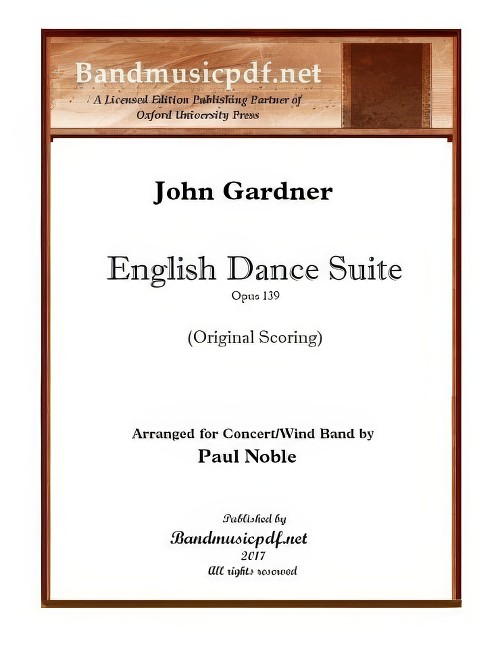 £495.00
£495.00English Dance Suite (Concert Band - Score and Parts) - Gardner, John - Noble, Paul
Original Scoring. Arranged for the modern Concert/Wind Band, scored for three trumpets, reasonable doubling of parts where the original musical effect is not altered so that players can have a more responsible and enjoyable experience, more legible parts with less doubling on one staff, etc. The piece is offered either as a complete suite of seven movements, and also as seven individual movements which may be purchased independently. The English Dance Suite was originally composed by John Gardner for Wind Band, and has been re-set for the modern Concert Band instrumentation. Both the original version, edited and type-set by Paul Noble, and this arrangement are first editions now available for purchase to bands around the world. The set of seven Renaissance dances depict John Gardner's love of Scottish music, the Renaissance heritage, and some of his own mischievous approach to music. The first movement, Chacony on a Golden Theme, reminiscent of the Allegro movement of Purcell's Golden Sonata, is much used as a vehicle for variation on a repeated short harmonic progression, often involving a fairly short repetitive bass-line which offered a compositional outline for variation, decoration, figuration and melodic invention. In this it closely resembles the passacaglia. The Alman originated in the 16th century as a duple metere dance of moderate tempo, already considered very old, with a characteristic double-knocking upbeat of one or occasionally three sixteenth notes. It appears to have derived from a German dance but no identifiable dance and no German dance instructions from this era survive. The Hornpipe, usually in 3/2 dance rhythm, is an Irish, Scottish and English dance. It is done in hard shoes, which are used to help keep track of how the dancer keeps in time. There are two variations of the hornpipe dance: fast and slow. Usually, more experienced dancers will do the slow hornpipe but younger dancers will start out with the fast hornpipe and then switch in later years. The Corranto is a 16th-century court dance characterized by short advances and retreats, in quick triple time. The Volta (Italian: the turn or turning) is an anglicised name from the later Renaissance. Its main figure consisted of a turn and lift in a sort of closed position. The Pavan is a slow processional dance common in Europe during the 16th century. The Reel, indigenous to Scotland, consists largely of quaver (eighth note) movement with an accent on the first and third beats of the bar.
Estimated dispatch 7-14 working days
-
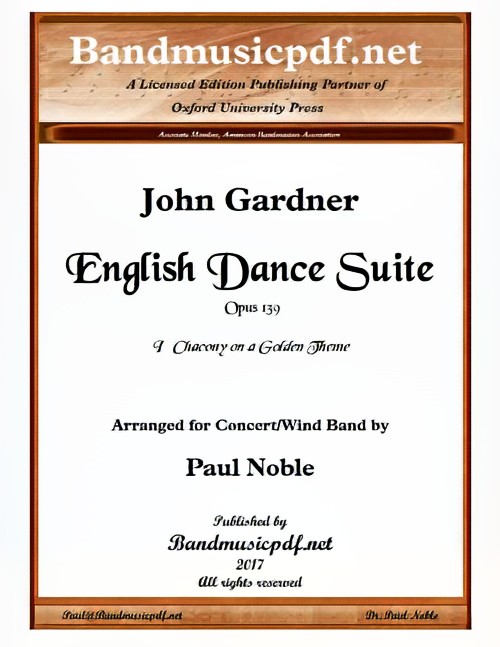 £125.00
£125.00English Dance Suite - I. Chacony on a Golden Theme (Concert Band - Score and Parts) - Gardner, John - Noble, Paul
Arranged for the modern Concert/Wind Band, scored for three trumpets, reasonable doubling of parts where the original musical effect is not altered so that players can have a more responsible and enjoyable experience, more legible parts with less doubling on one staff, etc. The piece is offered either as a complete suite of seven movements, and also as seven individual movements which may be purchased independently. The English Dance Suite was originally composed by John Gardner for Wind Band, and has been re-set for the modern Concert Band instrumentation. Both the original version, edited and type-set by Paul Noble, and this arrangement are first editions now available for purchase to bands around the world. The set of seven Renaissance dances depict John Gardner's love of Scottish music, the Renaissance heritage, and some of his own mischievous approach to music. The first movement, Chacony on a Golden Theme, reminiscent of the Allegro movement of Purcell's Golden Sonata, is much used as a vehicle for variation on a repeated short harmonic progression, often involving a fairly short repetitive bass-line which offered a compositional outline for variation, decoration, figuration and melodic invention. In this it closely resembles the passacaglia. The Alman originated in the 16th century as a duple metere dance of moderate tempo, already considered very old, with a characteristic double-knocking upbeat of one or occasionally three sixteenth notes. It appears to have derived from a German dance but no identifiable dance and no German dance instructions from this era survive. The Hornpipe, usually in 3/2 dance rhythm, is an Irish, Scottish and English dance. It is done in hard shoes, which are used to help keep track of how the dancer keeps in time. There are two variations of the hornpipe dance: fast and slow. Usually, more experienced dancers will do the slow hornpipe but younger dancers will start out with the fast hornpipe and then switch in later years. The Corranto is a 16th-century court dance characterized by short advances and retreats, in quick triple time. The Volta (Italian: the turn or turning) is an anglicised name from the later Renaissance. Its main figure consisted of a turn and lift in a sort of closed position. The Pavan is a slow processional dance common in Europe during the 16th century. The Reel, indigenous to Scotland, consists largely of quaver (eighth note) movement with an accent on the first and third beats of the bar.
Estimated dispatch 7-14 working days
